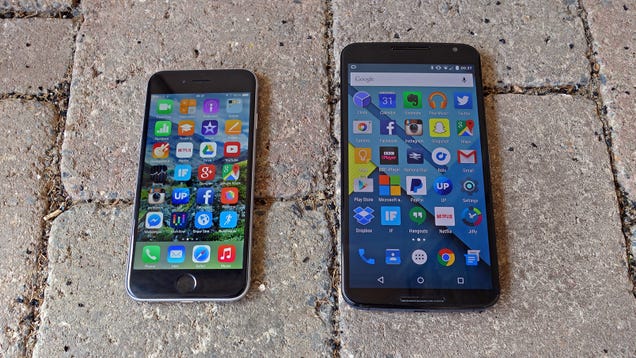
It is now seven years, and the great debate between iOS versus Android is still leading both Internet forums and in real life. But these platforms have come a long way, especially in the last two years. Still apply the arguments used before to decide which one was better? What are the characteristics that separate iOS 8.3 Android 5.1 Lollipop? We used a Nexus 6 and iPhone 6 for the answer
The rules of the game are established. iOS is the software Apple and Apple only works as he wants, or you accept it or find another phone. Furthermore, Android will let even change the application that you use to send text messages (SMS), add widgets to the home screen and even use other launchers if what you want. That’s one of the biggest differences that all users know.
But other big difference is that while Google applications run happily on IOS, there is no way to use the my Apple Android. In fact, this does not happen only with applications: move your documents, contacts, movies, emails, music and photos from Android to iOS is much easier and simpler than trying to iOS to Android. Again, it is quite a contrast established and known between the two platforms, so you better go deeper and find what else is different now, in 2015.
Interface and Notifications
The flat, clean and minimalist lines iOS 8 should you enough to iOS 7, when Apple dragged his operating system to the modern age. On the other hand, the colorful design Material Design of Google, presented with Android 5.0, wants to unify the experience of all your applications in order to help you use them more quickly and naturally, guiding your eyes .
But both are quite different. If you’ve got used to wearing one that simply can not get interest on the other. While Apple is committed to a more refined design, Google seeks to impact more. Both have beautiful designs, their way.
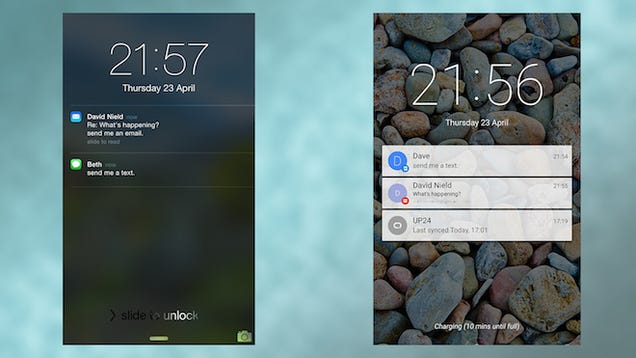
In a way, the notifications work the same way in both operating systems, and the differences are quite subtle and small: The Apple system still allows you to configure notifications individually for each application, while Google provides as much to answer or delete alerts directly from Notification Center.
With the new priority mode Lollipop , Android finally has something to rival the “Do Not Disturb” iOS mode, although both are a bit complicated to understand at first.
Well, then there’s the button “Back” button to mandatory veteran of Android, and an irrelevant and confusing to anyone who has used for a long time iOS button. It is one of the differences between the two platforms on which there is really no one right answer about whether it is good or bad, it just depends on what you like.

Compare with Google Now Siri is quite interesting. Siri has more about controlling things with your voice, use your phone without moving your hands or request information by voice. Google Now, however, also accept some orders with the voice, but its main focus is to give away information that you think is what you want and need based on your emails, search records, recent trips and more.
We’ve talked about how you can customize and give a completely new look to your Android, pixel by pixel, if you wish. No way to do this on an iPhone. There is a difference also in the ability to share things from an application. While Android allows you to virtually share any type of file through any application, iOS has opened very little in this regard. Still has a long way.
Applications and Ecosystem
Both Apple and Google offer a robust set of applications native in their platforms, but of course, Google applications are also available for iOS (YouTube, Gmail, etc …) while Android Apple completely ignored in this regard. Hangouts, for example, is a very good application that Google has developed to run on virtually any platform, while iMessage and FaceTime are limited, but also work better and are much more polished.
A more detailed description of each of the comparative applications require at least a dozen more items, but in summary, in most areas (emails, maps, contacts, calls) both iOS and Android have everything what do you need. You could say that Googla is much more innovative in emails through Gmail and Inbox, but lately the app Apple Mail is not far behind.
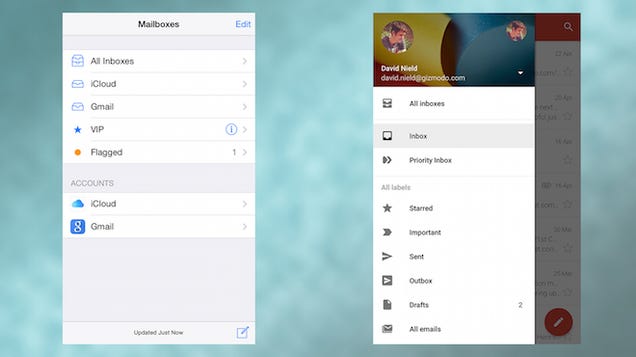
When it comes to third-party applications ( 3rd Parties ) and in general terms, the my largest and best known are present in both iOS and Android. As for new releases, however, still receives iOS first, and Periscope Meerkat being two of the most recent examples. If you want to join this revolution of streaming mobile, you have to have an iPhone.
Both applications come to Android at some point, without doubt (Meerkat is now available as Beta), but even with this type of release is still a delay that harms the Google system users. On the other hand, Google usually throws some applications (like Google Field Trip or Keep) first Android also update their my also first on its own platform rather than iOS.
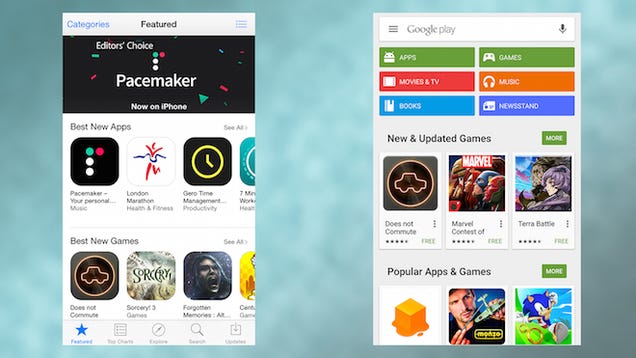
Sincerely, third-party applications have always been a strong point in iOS than Android, and that is maintained in 2015. The iPhone came first with its App Store and is easier to program for this platform by several factors (such as fewer devices and less fragmentation). As for applications, Android is not the disaster that are Windows Phone or BlackBerry, but still not on par with iOS.
The permissions for applications are also Android handled different. When you install the application you have to choose all or nothing; instead on iOS, permissions such as access to the camera or location are handled individually, and you can revoke it at any time without having to delete the application.
Stability, Security, Performance
Touch ID has been very good for iOS, as it has greatly improved the experience unlock or verify a purchase. Many Android manufacturers are trying to imitate, without much success. Samsung is the only manufacturer to have included technology for capturing fingerprints on good quality Android devices.
But with Android Lollipop get a very useful feature for “trust” in different areas, zones and devices. Such as to connect via Bluetooth to the speakers of your car automatically, without requiring a password to unlock. This offers users greater versatility and customization of security options. Lollipop has also equaled iOS to offer full encryption devices by default, although this is only mandatory for mobile and tablets Nexus.
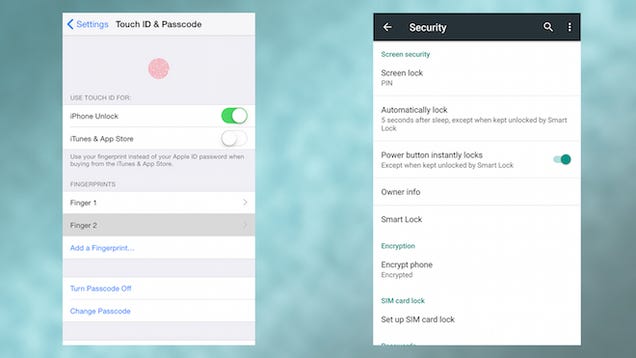
The application security is another constant point of debate. No doubt that Android is not as safe as iOS, and it is easier to be accessed unauthorized software on your devices. Of course, if you stay only downloading applications from the Google Play Store, the risk is minimal. Last month, for example, Google confirmed that all applications are reviewed before publication in the store, to provide greater security to users.
As terms of stability and performance, many Android and iPhone handsets in the market precluding a clear perspective. But overall, it is fair to say that both iOS as Android running quite well and smoothly on the latest devices, while the older ones are susceptible to small bugs and annoying application crashing.
In general, iOS wins in safety, only by a fairly small margin. Perhaps a greater risk of malware or instability is the price to pay for greater flexibility and customization capabilities on Android.
Beyond the mobile operating system
There are many extras to choose from: Apple Vs Google Health Fit, Pay Apple Vs Google Wallet, Android Vs Auto carplay. To try to finish this part before they reach 9 or Android iOS 6, we have to limit ourselves in any way.
Music and movies seems a good area in which to focus . Android does not have the same type of management system for desktop computers that Apple has with iTunes. Android users can always turn to Play Music or Play Movies, and although both are improving a lot, do not offer the same degree of control of content that iTunes offers.
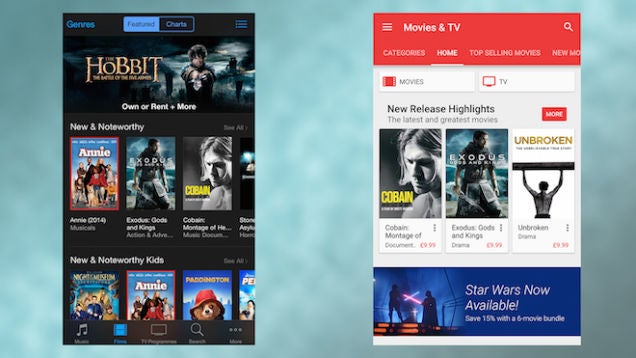
Google orientation to the cloud is not as useful when it comes to managing our own digital library as it is facing the mail or office documents. This does not mean that you can not organize a library of music, movies or series on Android, but the process is not as straightforward as in IOS. On the other side you buy from the Apple Store will not serve you on Android. The contents purchases on Android stores are exportable to other platforms.
Finally, it seems unfair to mention this in a comparison of software, but for many years, camera iPhone has shown to Android manufacturers in virtually all specifications, from speed to image quality. Apple continues to lead in that direction, albeit not blame the Android software.
In short
We wrote about 2,000 words, and we have barely begun to scratch the surface of the issue iOS Vs Android. It is a good example of how these operating systems have expanded their area of influence and how versatile it can be a phone today.
Just read some of the Items found online about Android Vs iOS to realize that what counts are the small differences. The position of a button, the manner in which a specific function is managed, or confidence in one or another application make a difference.
If we pass these details , what you see is that Apple and Google have radically different ideas about how to address issues such as hardware , software, web, or private user data. Apparently, iOS and Android have never been so similar. Beneath the surface, both are moving further.
As Google and Apple functions are copied, and both operating systems become more and more mature, choose between either question is no longer a list of functions, but to choose between what lies beyond. In 2015, trying to choose between two different ecosystems, to choose who to trust our data and how we live our digital lives through smartphones, computers and the Internet.
Cover photo:. Ryan McLaughlin / Flickr, under Creative Commons
***
Psst You can also follow us on Twitter, Facebook or Google+!)
No comments:
Post a Comment